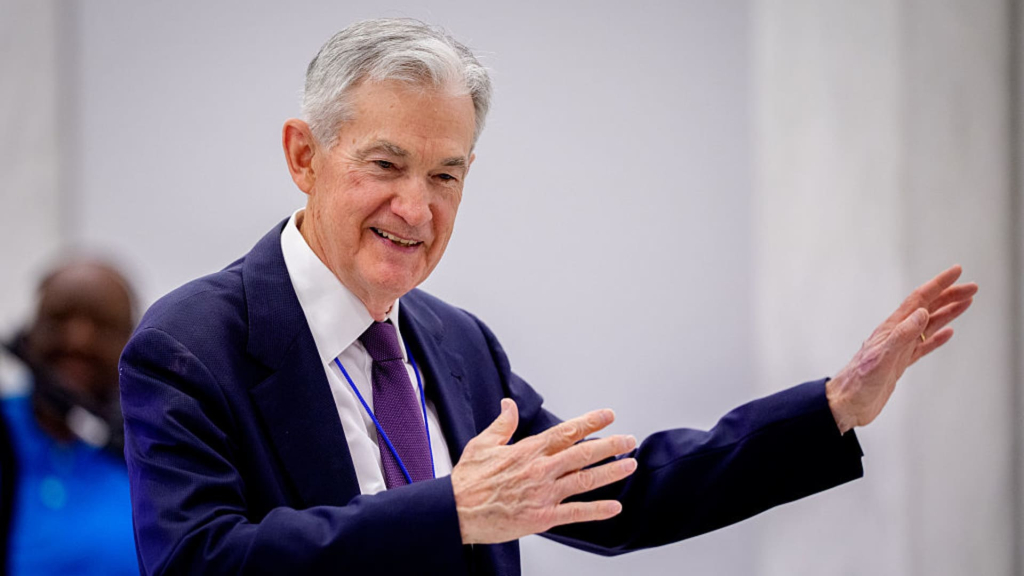Jerome Powell, Chair of the Federal Reserve, asserted Thursday that the longer-term interest rates are expected to rise as economic conditions evolve and monetary policy remains in a state of transition.
During his remarks focused on the central bank’s ongoing review of its policy framework—an effort last conducted in the summer of 2020—Powell indicated that significant changes have taken place in the economic landscape over the past five years.
Throughout this period, the Fed has grappled with soaring inflation, prompting a series of historically aggressive increases in interest rates. Powell emphasized that, despite longer-term inflation expectations aligning with the Fed’s 2% goal, the era of near-zero interest rates is unlikely to return in the near future.
“Higher real rates may also suggest that inflation could be more volatile going forward than during the inter-crisis period of the 2010s,” Powell stated in his prepared remarks for the Thomas Laubach Research Conference in Washington, D.C. “We may be entering an age characterized by more frequent and possibly longer-lasting supply shocks, presenting a significant challenge for both the economy and central banks.”
The Federal Reserve maintained its benchmark borrowing rate close to zero for seven years following the 2008 financial crisis. Since December 2024, the overnight lending rate has fluctuated between 4.25% and 4.5%, with the most recent figure at 4.33%.
Powell’s remarks regarding “supply shocks” echo comments made in recent weeks, highlighting the complex balancing act the Fed faces between fostering employment and curbing inflation.
Although Powell did not specifically mention President Donald Trump’s tariffs during his Thursday address, he has previously acknowledged that tariffs are likely to hinder growth and elevate inflation. The true magnitude of these impacts remains uncertain, especially since Trump has recently softened his stance on imposing aggressive tariffs as a negotiation period unfolds.
Despite these complexities, the Fed remains hesitant to loosen its policy stance after having reduced its benchmark rate by a full percentage point last year.
Looking Back and Forward
As the Fed continues its framework review, it aims to establish a five-year strategy to guide its decision-making and enhance communication with the public.
Powell noted that the review will encompass various factors, including how the Fed conveys its future expectations and an assessment of previous framework adjustments.
In light of the tumultuous summer of 2020, the Fed introduced a “flexible average inflation target” strategy intended to allow inflation to exceed normal levels in pursuit of full employment. However, as inflation surged in the aftermath of the COVID-19 pandemic, this strategy became untenable, forcing the Fed into a series of steep interest rate increases.
The current review is set to evaluate how the Fed addresses “shortfalls” in its inflation and employment objectives.
Initially, Powell and his colleagues regarded the inflation spike of 2021 as “transitory,” attributing it to pandemic-related factors. Yet, numerous Fed officials have indicated that the framework adopted in 2020 did not influence their decision to maintain low rates while inflation continued to rise.
“In our discussions thus far, participants have indicated that revisiting the language regarding shortfalls would be appropriate,” he stated. “During our meeting last week, we shared similar sentiments concerning average inflation targeting. We will ensure that our new consensus statement remains robust across a variety of economic scenarios and developments.”
Regarding the potential impact of supply shocks on policy, Powell highlighted the review’s emphasis on communication.
“While academics and market observers have generally perceived the Fed’s communications as effective, there is always room for enhancement,” he noted. “In periods marked by larger, more frequent, or disparate shocks, effective communication necessitates conveying the uncertainty surrounding our understanding of the economy and its outlook. We will explore methods to improve in this area as we advance.”
Powell did not provide a specific timeline for the completion of the review, merely stating that he expects it to conclude in the “coming months.” In the previous review, he used his annual remarks during the Fed’s retreat in Jackson Hole, Wyoming to unveil the policy adjustments.
























